“You’re moving to Paris? It’s a dirty, dirty city.”
So said a high-school classmate at a reunion in Ohio 25 years ago, after I excitedly told her of my upcoming relocation.
I’m not sure she’d even been to Paris. But it’s true that the level of filth in the City of Light has been a topic for centuries, from the days when the streets ran with blood from slaughterhouses (and, occasionally, revolutions) right up to dog poop on the sidewalk in modern times.
These days, the debate is virtual, even if the trash isn’t. Social-media posts under the hashtag “saccageParis” (trashing Paris) accuse Mayor Anne Hidalgo not only of allowing the city to become filled with garbage, but of despoiling the streets with Lego-like benches and ugly barriers for bike lanes. She also is blamed for creating traffic jams by allowing restaurants to put outdoor serving spaces where parking places used to be. Not to mention crime and graffiti.
You can hardly go on Twitter or Facebook these days without seeing posts along these lines.
Paris poubelle#SaccageParis #Paris20 pic.twitter.com/QNLbZU2E8g
— Daniel Ino (@danielino22) July 25, 2021
What began as a viral campaign – perhaps not coincidentally, around the time Hidalgo was displaying interest in running for president – has expanded to include nearly all the elements of a full-fledged French polémique: angry accusations from opposition politicians, denial and then a climbdown from the government (in this case the mayor), hypocrisy, inconsistency, a street demonstration and a podcast. All over what seems to me to be a normal level of big-city inconvenience.
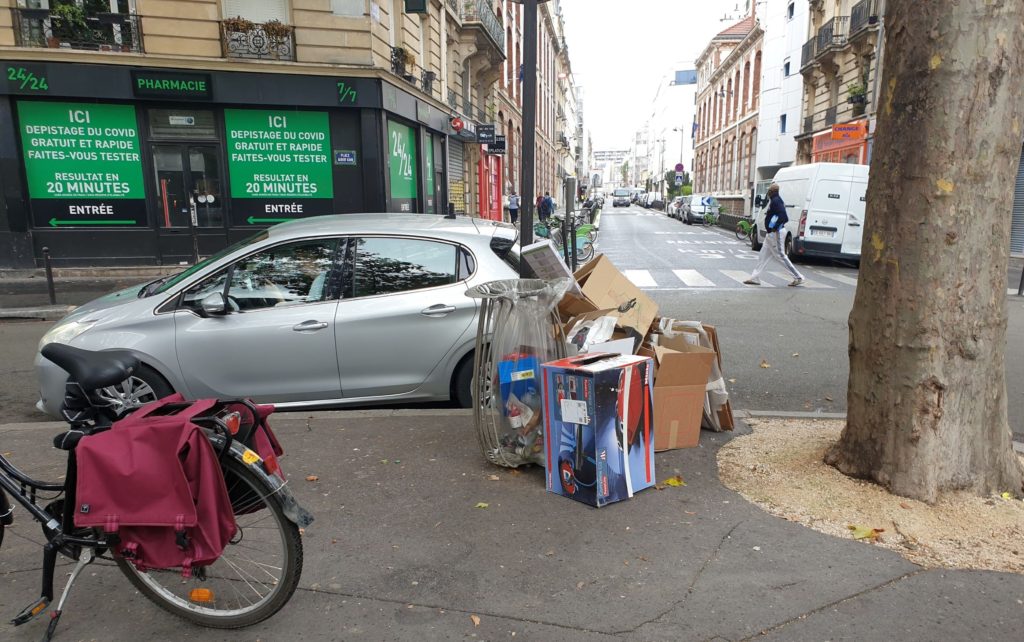
It’s easy for those who’ve lived here a long time to forget how excellent public services are. Trash and recycling are picked up at least once a day, and the streets are cleaned that often as well. The city, backed by ordinances and fines, really has gotten dog excrement off the sidewalk for the most part. Anyone who lives in the U.S. can well appreciate the aesthetic value of putting telephone and power lines underground. The homeless – yes, there are plenty of them – can sleep in pop-up tents courtesy of private associations.
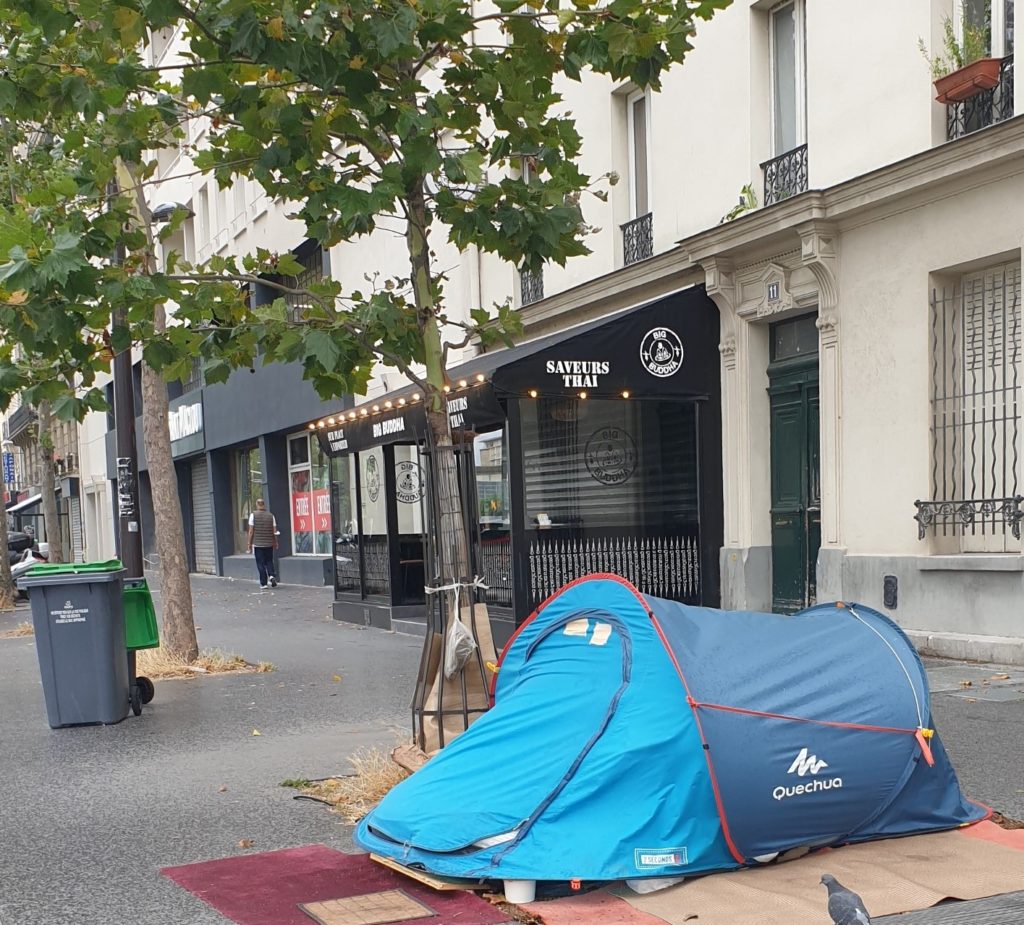
Hildalgo has certainly made some mistakes during her time as mayor. She got rid of highly successful bike-rental and electric-car rental programs; in both cases the successors were terrible. But there is a white, upper middle-class element to the #saccageparis protests. How can anyone justify more parking places rather than more eating places in these troubled times?

Are these mushroom-style seats really less attractive than the traditional green benches?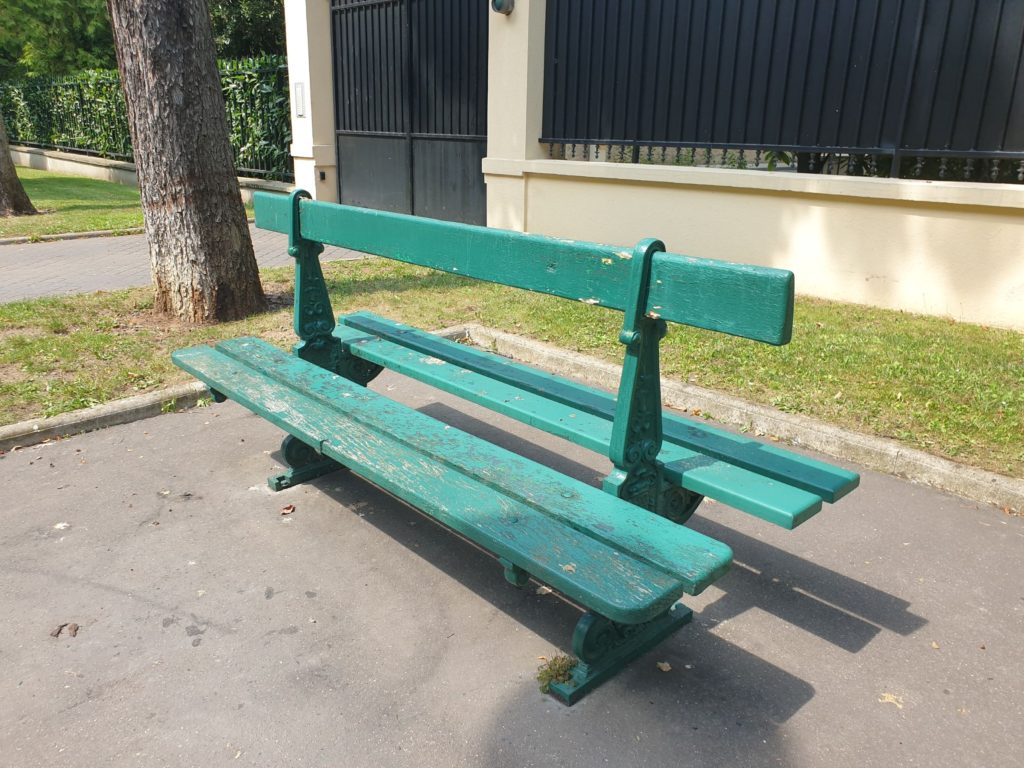
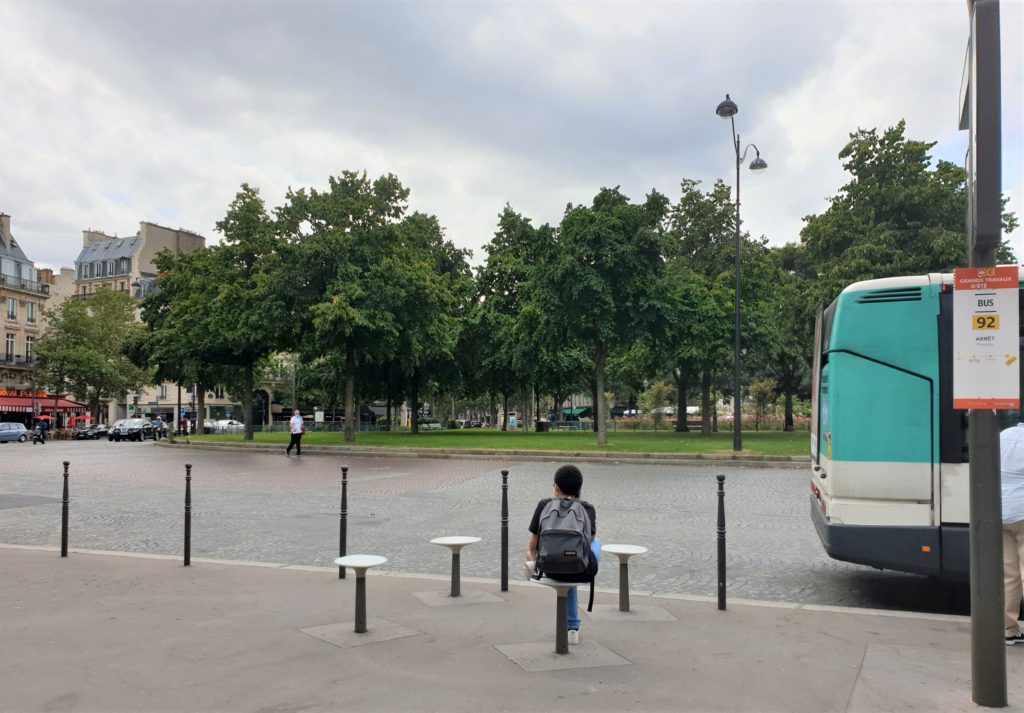
And as far as I’m concerned, the rue de Rivoli works beautifully as a non-car street, even if the yellow barriers aren’t that attractive (the city says they will be replaced with permanent barriers as part of an eight-step plan to reduce uglification.)
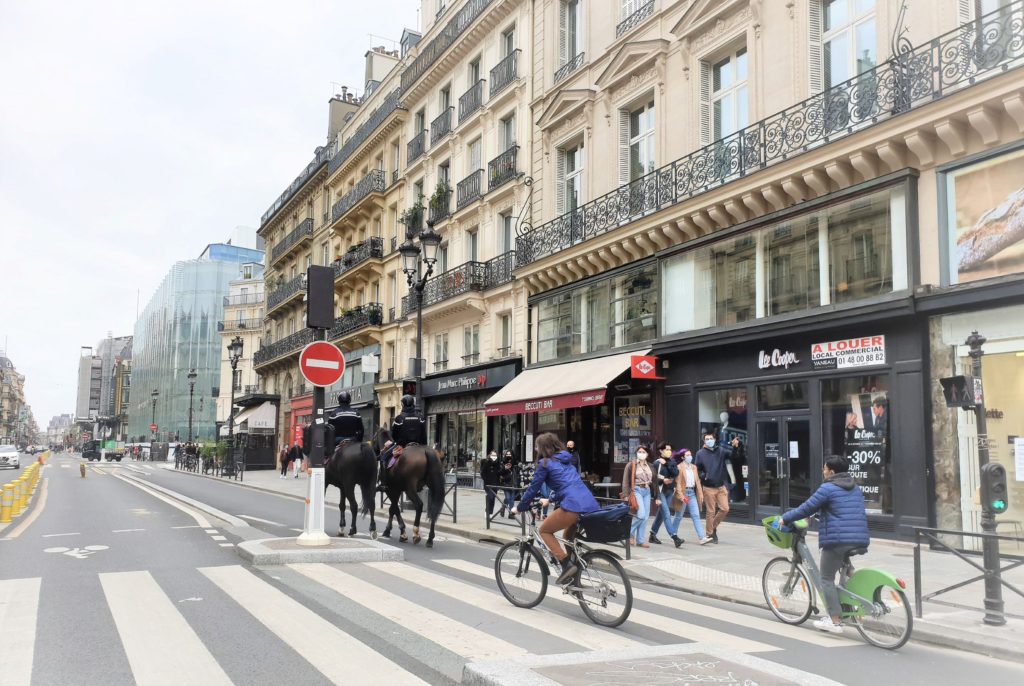
I wonder if all of the trash photos on Facebook and Twitter are fully in context. Are they all recent? Are they all Paris? Can the messes be explained?
To answer that, I did a quick and highly anecdotal tour of my own neighborhood on Saturday. Mostly, there was no outdoor trash at all. I did see some beer bottles scattered around a public wastebasket, but hey, it was after a presumably big Friday night. They were gone in a few hours.
More impressive was a huge pile of garbage on the sidewalk on the Avenue Villiers, just north of where a demonstration against President Emmanuel Macron’s new vaccination rules was blocking the big traffic circle.
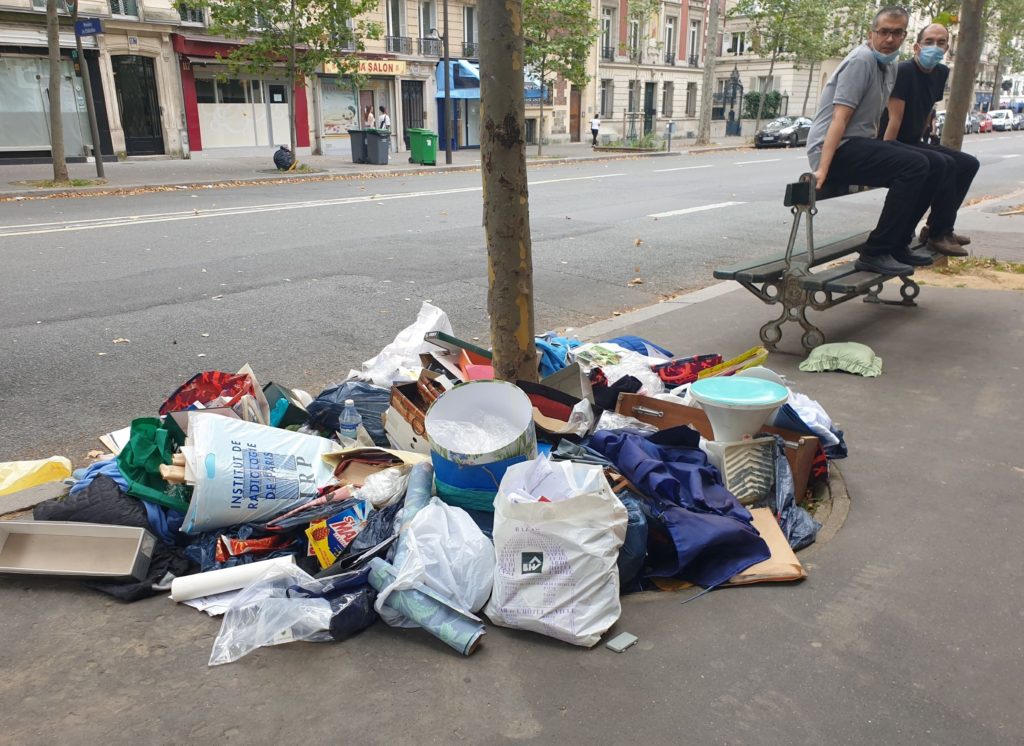
It would have been a worthy photo for #saccageParis. However, as it happened, I knew the gentleman on the left in the photo. He runs an excellent produce shop just a few feet from this scene. And I knew he was closing for the summer that day, so I thought perhaps he had cleaned out the store basement.
He had. So what’s the deal with the stuff? I asked him. “The city was supposed to pick it up,” he said. “But they can’t get through because of the demonstration.”
I went back the next day. Everything was gone.
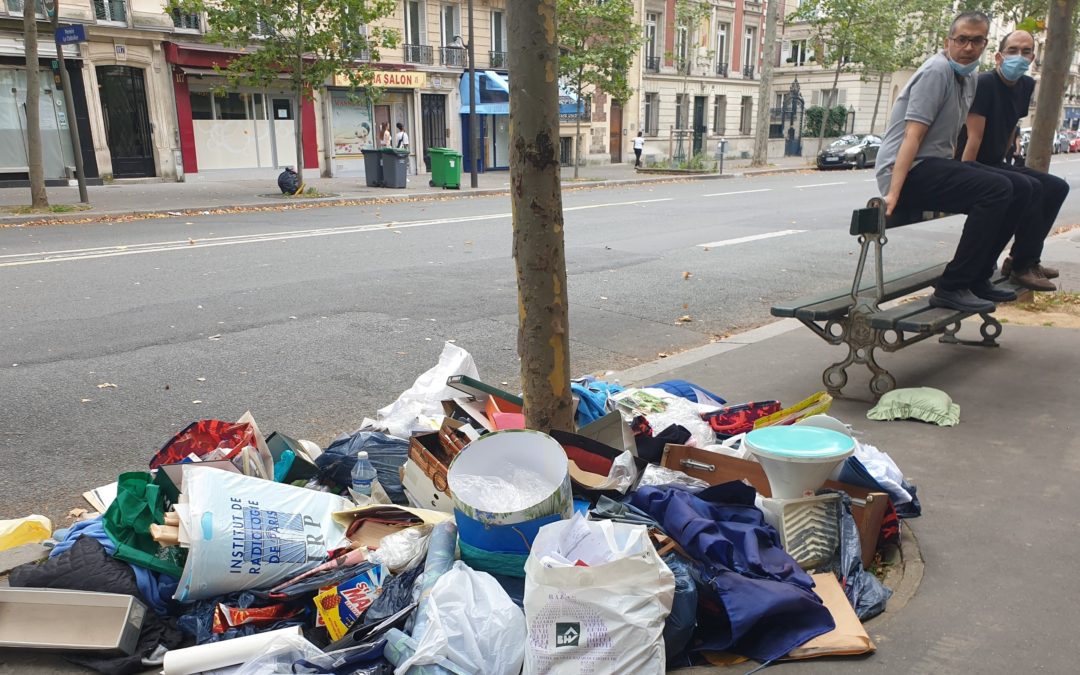
I enjoy reading your articles. Thank you for posting them. The world is in constant change and much of it is not good.
Thanks, Gary! Certainly not much good this year or last. Glad you liked the post.
Thanks Andy! The #saccageParis people DEFINITELY need to hear about this.
Recommend a visit to Philadelphia; You want trash, we got trash! This summer the Streets Dept is so understaffed that normal weekly collections run 2-4 days late (meaning trash stays on the curb that much longer, in the heat), and separate collections for recyclables have been abandoned, so that everything gets mixed in the trucks, when they finally show up. C’est normal! (Oh, and also, a proposal to inaugurate regular street cleaning has run into solid walls of opposition from folks who would rather live with filthy streets than move their cars occasionally to allow the cleaning trucks to come by… )
Excellent comment. Parisian whiners should visit Oakland CA. Among the many notable sites this summer in this American Shangri-La by the Bay:
https://www.google.com/url?sa=i&url=https%3A%2F%2Fabc7news.com%2Foakland-homeless-shelter-people%2F5115527%2F&psig=AOvVaw2EsRa-1U5O6iHK0CpjeV96&ust=1627445392633000&source=images&cd=vfe&ved=0CAsQjRxqFwoTCPjr3tywgvICFQAAAAAdAAAAABAD
https://www.google.com/url?sa=i&url=https%3A%2F%2Fabc7news.com%2Fhome-depot-homeless-in-okaland-oakland-crisis%2F5419495%2F&psig=AOvVaw2EsRa-1U5O6iHK0CpjeV96&ust=1627445392633000&source=images&cd=vfe&ved=0CAsQjRxqFwoTCPjr3tywgvICFQAAAAAdAAAAABAI
https://www.google.com/url?sa=i&url=https%3A%2F%2Fwww.sfchronicle.com%2Fnews%2Farticle%2FFrom-tent-to-shed-Change-is-overwhelming-for-a-12414554.php&psig=AOvVaw2EsRa-1U5O6iHK0CpjeV96&ust=1627445392633000&source=images&cd=vfe&ved=0CAsQjRxqFwoTCPjr3tywgvICFQAAAAAdAAAAABAO
https://www.google.com/url?sa=i&url=https%3A%2F%2Fwww.pressdemocrat.com%2Farticle%2Fnews%2Foakland-approves-rules-to-restrict-homeless-encampments%2F&psig=AOvVaw2EsRa-1U5O6iHK0CpjeV96&ust=1627445392633000&source=images&cd=vfe&ved=0CAsQjRxqFwoTCPjr3tywgvICFQAAAAAdAAAAABAZ
https://www.google.com/url?sa=i&url=https%3A%2F%2Fwww.timesheraldonline.com%2F2020%2F03%2F09%2Fwhen-it-comes-to-the-homeless-the-bay-areas-compassion-has-a-limit&psig=AOvVaw2EsRa-1U5O6iHK0CpjeV96&ust=1627445392633000&source=images&cd=vfe&ved=0CAsQjRxqFwoTCPjr3tywgvICFQAAAAAdAAAAABAl
Thanks, as a rule I found Paris better maintained and cleaned than my little burg. They even wash the streets and sidewalks.
They do indeed, every day!